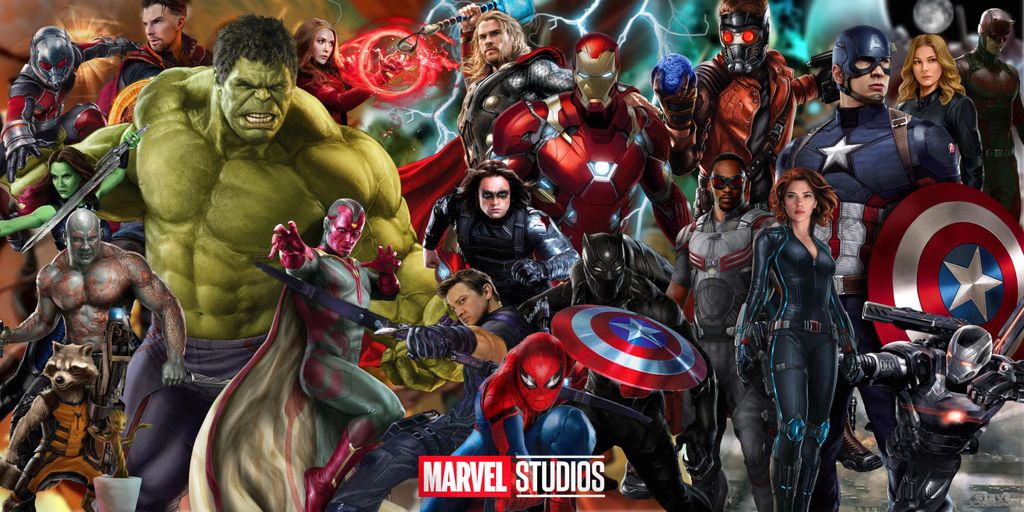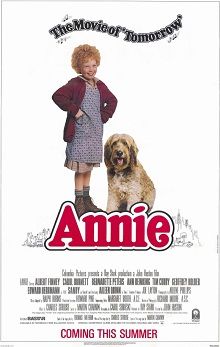
The year 1982 brought to cinematic life a story that had already captivated millions through comic strips and the Broadway stage: ‘Annie.’ This American musical comedy-drama, directed by the legendary John Huston, was the first film adaptation of the enormously successful 1977 Broadway musical, which itself was based on Harold Gray’s enduring ‘Little Orphan Annie’ comic strip. From its ambitious inception to its lavish production, the film represented a significant investment and a bold creative endeavor, aiming to translate the inherent optimism and charm of Annie to the silver screen.
Set against the grim backdrop of the Great Depression in 1933, the story of Annie—a spirited orphan dreaming of a brighter ‘Tomorrow’—offered a much-needed sense of hope amidst dire circumstances. The film sought to capture this essence, bringing together a star-studded cast, elaborate sets, and musical numbers that aimed for a grand, cinematic spectacle. Despite its high aspirations and considerable resources, the journey from stage triumph to film adaptation was fraught with creative tensions and significant alterations, leading to a complex legacy that is still discussed today.
This in-depth exploration delves into the making of the 1982 ‘Annie,’ examining the intricate process of its creation, from the strategic acquisition of its rights to the unique challenges faced during its production. We will explore the vision of its unlikely director, the performances of its iconic cast, the narrative shifts introduced by its screenwriter, the sheer scale of its budget and filming locations, and the significant changes made to its beloved musical score. By understanding these facets, we gain a clearer picture of why this film, though commercially successful, elicited such a mixed critical response and how it ultimately shaped the ongoing story of ‘Little Orphan Annie’ in popular culture.
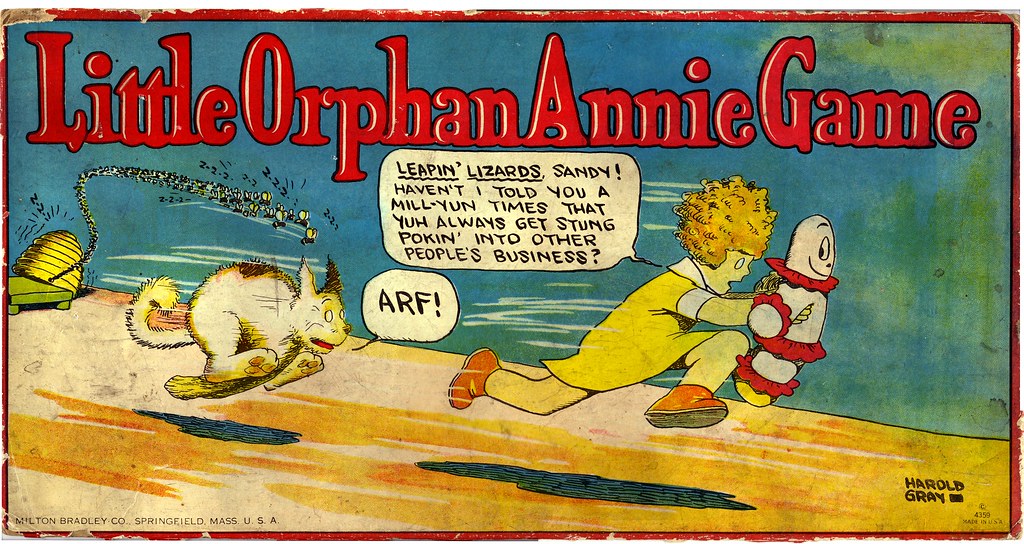
1. **The Genesis of the 1982 Film: From Comic Strip to Broadway to Screen**The story of ‘Annie’ has a rich lineage, beginning with Harold Gray’s ‘Little Orphan Annie’ comic strip, which first debuted in 1924. This beloved strip introduced the enduring character of a plucky, red-haired orphan and her adventures, quickly becoming a staple in American popular culture for decades. Its themes of resilience, hope, and the pursuit of family resonated deeply with readers, particularly through challenging times.
The comic strip’s widespread popularity naturally paved the way for its adaptation into other mediums, most notably the 1977 Broadway musical. Penned by Charles Strouse (music), Martin Charnin (lyrics), and Thomas Meehan (book), the musical became an instant sensation, lauded for its catchy tunes, heartwarming story, and charismatic performances. It earned numerous accolades, including multiple Tony Awards, cementing its status as a theatrical masterpiece and a cultural phenomenon that continued to play to packed houses for years.
The enormous success of the stage musical inevitably attracted the attention of Hollywood, sparking a competitive bidding war for the film rights. Columbia Pictures emerged victorious, securing the rights for a staggering $9.5 million. This was a record-breaking sum at the time, especially when compared to the initial asking price of $5 million by the stage play’s writers. This significant investment underscored Columbia’s belief in the project’s potential and its commitment to translating the Broadway magic to a grand cinematic scale, setting high expectations for the adaptation’s scope and impact.
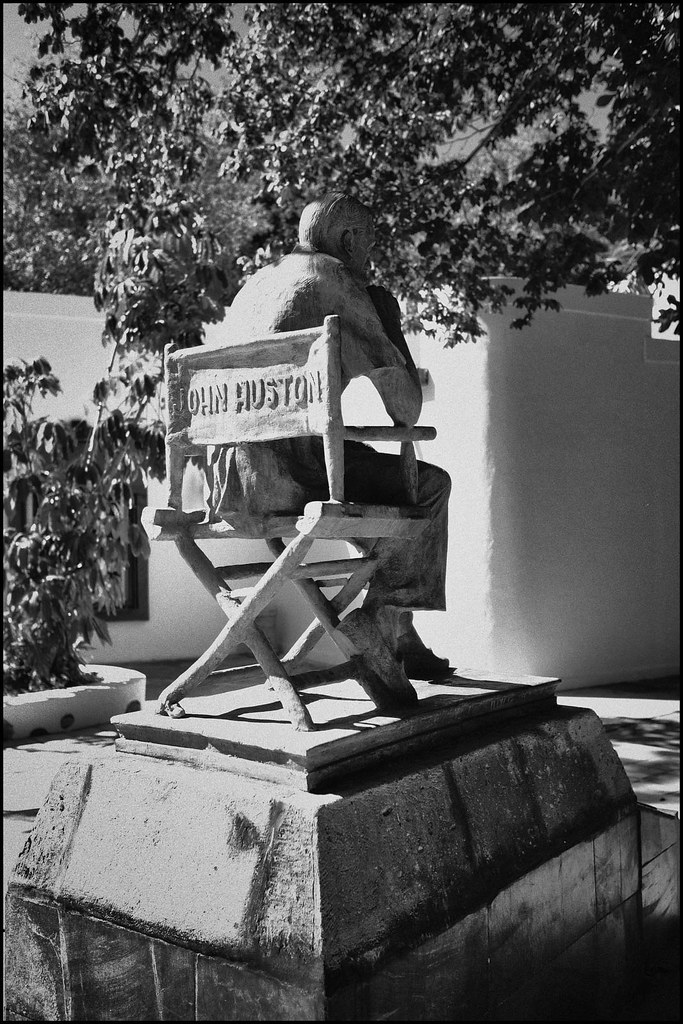
2. **John Huston’s Vision: Directing His Sole Musical**The choice of John Huston to direct ‘Annie’ was, in many respects, a surprising one, given his extensive and celebrated career spanning over 40 years that notably lacked any prior experience in directing a musical. Huston was a titan of cinema, known for gritty dramas, adventures, and film noirs, making a lighthearted musical seem an unusual fit for his distinctive directorial style. Screenwriter Carol Sobieski aptly characterized the decision to hire Huston as an “outsider risk,” highlighting the inherent gamble taken by producer Ray Stark, who was known for his penchant for such high-stakes situations.
Ray Stark, acknowledging the unprecedented scale of the ‘Annie’ film adaptation, chose to appoint both Huston and Joe Layton, the film’s choreographer, as executive producers. This decision aimed to ensure comprehensive oversight for what was perceived as too vast an undertaking for a single individual. The production was envisioned as a lavish spectacle, requiring meticulous coordination and a unified creative vision to navigate its complexities, a task that demanded seasoned leadership both on and off the set.
However, Huston’s interpretation of the musical was not universally embraced, particularly by Martin Charnin, the original lyricist. In a 1996 interview, Charnin expressed significant disappointment, stating that Huston and Stark had made “major changes in the film that destroyed the essence of Annie.” He lamented the lack of creative control the original creators had exercised, attributing it to the substantial sum for which they sold the rights. Charnin specifically criticized Albert Finney’s portrayal of Warbucks as “an Englishman who screamed” and Carol Burnett’s Miss Hannigan as “a man-crazy drunk,” feeling these interpretations deviated considerably from the spirit of the stage production.
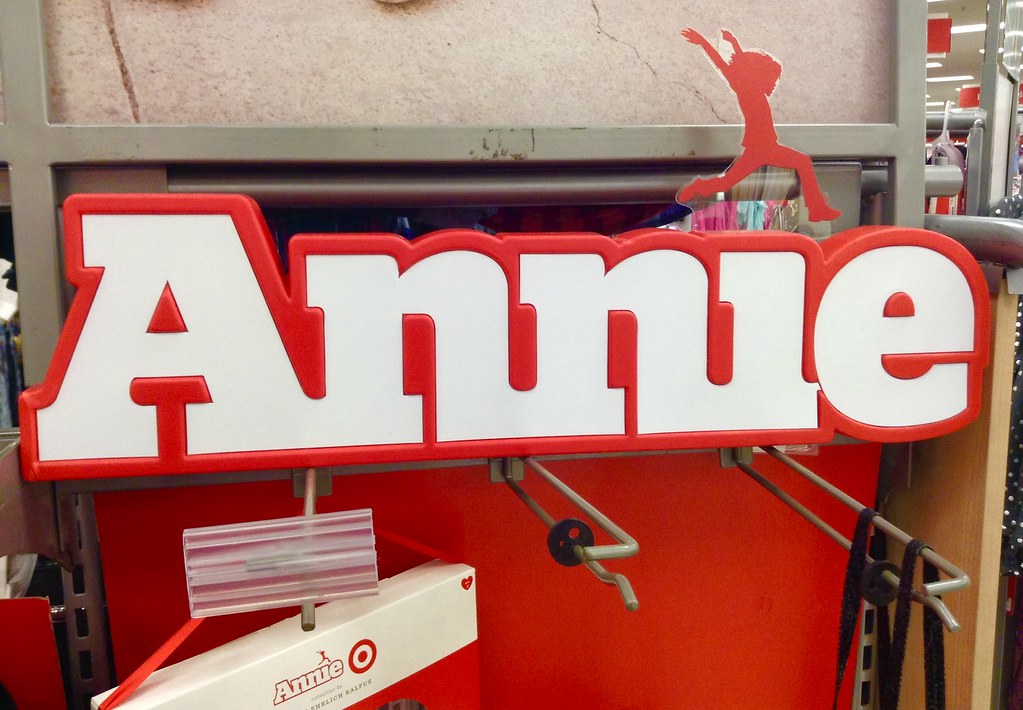
3. **A Cast of Stars: Key Performances and Casting Choices**Central to the film’s appeal was its meticulously chosen cast, spearheaded by Aileen Quinn in her film debut as the titular orphan. Quinn was selected from an astonishing 9,000 girls who auditioned across the United States, Canada, and Europe, a testament to the magnitude of the casting search. Despite the widespread search for talent, Quinn’s performance later received the unfortunate distinction of a Golden Raspberry Award for Worst Supporting Actress and Worst New Star, reflecting some of the critical challenges faced by the film.
Albert Finney took on the role of Oliver ‘Daddy’ Warbucks, the billionaire businessman who ultimately adopts Annie. Prior to Finney’s casting, esteemed actors like Sean Connery and Cary Grant were also considered for the part, indicating the high caliber of talent sought for the pivotal character. While Martin Charnin harbored reservations about Finney’s portrayal, calling him “an Englishman who screamed,” many critics, including Roger Ebert, found his performance endearing, noting that he “steadily turns into a quite wonderful father figure” and praised his “good humor.”
Carol Burnett, a comedic icon, was cast as the formidable Miss Agatha ‘Aggy’ Hannigan, the cruel and alcoholic proprietor of the Hudson Street Orphanage. Bette Midler was initially considered for the role, but Burnett ultimately secured the part, bringing her unique blend of comedic timing and dramatic flair to the character. Her portrayal was a standout for many, with Gary Arnold of The Washington Post citing Burnett’s performance as “the closest thing to a saving grace” for the film, highlighting its memorable impact amidst varied reviews. The film also featured other notable actors who contributed to its ensemble, including Ann Reinking as Grace Farrell, Tim Curry as Daniel Francis ‘Rooster’ Hannigan (a role for which Jack Nicholson, Mickey Rooney, Mick Jagger, and Steve Martin were considered), Bernadette Peters as Lily St. Regis, Edward Herrmann as Franklin D. Roosevelt, Geoffrey Holder as Punjab, and Roger Minami as The Asp, each bringing distinct energy to their roles.
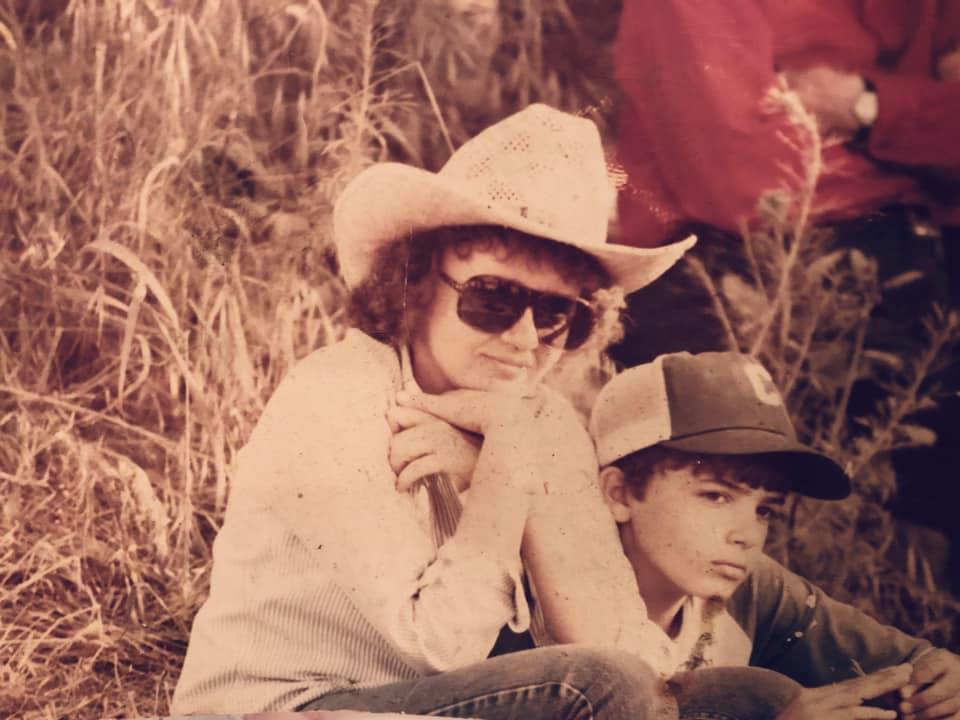
4. **Screenplay Adaptations: Carol Sobieski’s Narrative Departures**Carol Sobieski, who penned the screenplay for the 1982 film, introduced several “major differences between the stage musical and the film adaptation,” significantly altering key plot points and character arcs. These changes aimed to enhance the cinematic experience and address practical filming considerations, diverging from the original theatrical narrative in notable ways. The modifications reflect a deliberate effort to adapt the story for a different medium, impacting both the pacing and the emotional beats of the story.
One of the most significant narrative shifts involved the climax of the story. In the stage musical, Miss Hannigan, Rooster, and Lily are apprehended at the Warbucks mansion during Christmas by the United States Secret Service, thwarting their plan to kidnap Annie. However, in the film, due to summertime shooting schedules, Annie is kidnapped on the eve of the Fourth of July, leading to Warbucks organizing a citywide search. The film culminates in a dramatic showdown on the Former Erie Railroad Bridge, providing a more action-oriented and visually dynamic climax tailored for the screen.
Sobieski’s screenplay also saw the expanded inclusion of Punjab and The Asp, Warbucks’s loyal servants and bodyguards. These characters, originating from the “Little Orphan Annie” comic strip, were given more prominent “supporting roles” in the film, serving as protective figures for Annie and adding elements of exoticism and action to the narrative. Furthermore, a crucial alteration was made to Miss Hannigan’s character arc. In the film, she experiences a moment of redemption, “desperately tr[ying] to stop him [Rooster]” from harming Annie, though she is easily knocked out. This marked a departure from the stage musical, where Hannigan is typically portrayed as fully aware of Rooster’s murderous intentions and is arrested alongside him and Lily, making her cinematic portrayal a more nuanced, albeit controversial, interpretation.
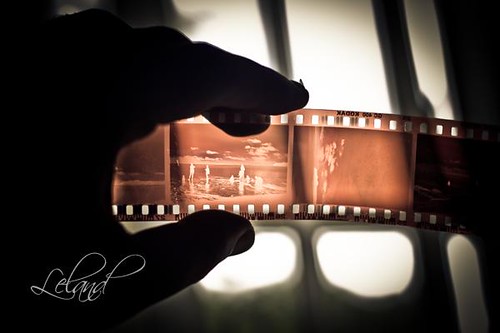
5. **The Grand Scale of Production: Budgetary Challenges and Filming Locations**The 1982 adaptation of ‘Annie’ was an undertaking of immense proportions, reflected in its substantial financial investment. The film’s budget exceeded $35 million, a formidable sum for its time. Some estimates even “suggest[ed] it cost as much as $59 million after marketing and distribution,” making it one of the most expensive films produced during that era. This monumental expenditure positioned ‘Annie’ as “the most expensive project financed by Columbia Pictures up to that point,” underscoring the studio’s high expectations and commitment to a lavish production.
Principal photography for the film spanned six weeks in 1981, utilizing a variety of striking locations. A significant portion of the filming took place at Monmouth University, then known as Monmouth College, in West Long Branch, New Jersey. The university’s picturesque campus, featuring two grand mansions—one being the historic Shadow Lawn Mansion—served as the majestic exteriors for Oliver Warbucks’s sprawling estate. These opulent settings were crucial in conveying the billionaire’s lavish lifestyle and providing a stark contrast to Annie’s humble beginnings.
For one of the film’s most climactic scenes, location shooting moved to the “NX Bridge, an abandoned railroad bridge over the Passaic River in Newark.” This imposing structure provided a dramatic backdrop for the high-stakes chase and confrontation that forms a pivotal part of the film’s finale. Additionally, many of the bustling “street sets were filmed at Warner Bros. Burbank Studios” in California. Production designer Dale Hennesy meticulously “overhauled the old ‘Tenement Street’ back lot set” there, outfitting the New York-styled apartment and storefront facades with authentic New York fire escapes and other architectural treatments specifically imported for the production. Tragically, Hennesy died during filming, and in a touching tribute, the backlot set was subsequently renamed “Hennesy Street” in his honor, marking his lasting legacy on the film.

6. **Musical Innovations and Criticisms: New Songs and Creative Disagreements**The cinematic adaptation of ‘Annie’ not only modified its narrative but also saw significant alterations to its musical score, introducing new compositions while cutting several beloved numbers from the original Broadway production. The film featured five new songs designed to enhance the visual storytelling and provide fresh material for the screen. These included “Dumb Dog,” “Sandy,” “Let’s Go to the Movies,” “Sign,” and “We Got Annie,” each contributing to the film’s unique musical landscape and offering new lyrical expressions for its characters and plot developments.
Conversely, a number of songs that were integral to the stage musical were notably absent from the film version. Among the cut songs were “We’d like to Thank You, Herbert Hoover,” “N.Y.C,” “You Won’t Be an Orphan for Long,” “Something Was Missing,” “Annie,” and “New Deal for Christmas.” These omissions significantly altered the musical’s original thematic flow and character development. Furthermore, while the song “Maybe” was given two reprises in the film, “Little Girls” and “Easy Street” did not receive additional renditions, further distinguishing the film’s musical arrangement from its theatrical predecessor.
These musical choices, along with other creative directions, drew sharp criticism from Martin Charnin, the original lyricist. In a 1996 interview, Charnin unequivocally “dismissed the adaptation and its production,” expressing profound disappointment. He articulated that the film “distorted what this musical was” and attributed this to the decision to sell the rights for a “considerable amount of money,” which in turn meant they did not “exercise any kind of creative control.” Charnin felt that the director, John Huston, and producer, Ray Stark, fundamentally altered the musical’s essence, particularly noting that the crucial “emotional relationship between Annie and Warbucks was distorted.” Most tellingly, he revealed that the iconic hit song “Tomorrow” was even “downplayed because ‘Stark thought it was corny’,” a sentiment that deeply troubled the musical’s original creators.
One particularly costly musical change involved the staging of “Easy Street.” Originally, this number was planned to be the film’s biggest musical sequence, prompting the construction of a specially-created outdoor street set that cost “more than $1 million.” After a week of intensive shooting, the dailies were reviewed and deemed “overstuffed” and “sour,” leading to the decision for an expensive re-shoot. This second version of the scene, undertaken nearly two months after principal filming had concluded, was shot indoors in a style that more closely “mimicked the ambience portrayed in the original stage musical,” highlighting the production’s willingness to re-evaluate and invest further to achieve the desired artistic outcome, despite initial missteps.

7. **Critical Reception: A Mixed Chorus of Praise and Scrutiny**Upon its release, the 1982 film ‘Annie’ found itself at the receiving end of a spectrum of critical responses, marked by both commendation for its grand scale and scrutiny over its artistic direction. Rotten Tomatoes, aggregating reviews, indicates an approval rating of 49% based on 37 reviews, with an average score of 5.3/10. The site’s critical consensus noted that director John Huston proved “an odd choice to direct, miring Annie in a sluggish, stagebound mess of an adaptation,” though it conceded that “the kids are cute and the songs are memorable.” Similarly, Metacritic assigned the film a weighted average score of 39 out of 100 based on 10 critics, generally pointing to “unfavorable” reviews.
Prominent critics of the era offered nuanced perspectives. Roger Ebert, for instance, awarded the film three stars out of four, observing that ‘Annie’ was “so rigorously machine-made, so relentlessly formula” that it “is not about anything” despite its numerous scenarios. Nevertheless, Ebert expressed personal enjoyment, praising “the energy that was visible on the screen, and the sumptuousness of the production numbers,” alongside the “good humor of several of the performances,” singling out Albert Finney as Daddy Warbucks and Carol Burnett as Miss Hannigan, while also noting Aileen Quinn “sort of grew on me.” This sentiment reflected a common thread: an appreciation for the spectacle tempered by reservations about its narrative depth.
Other critical voices were more pointed in their assessments. Vincent Canby of The New York Times, while acknowledging its lavishness, remarked that “‘Annie’ is far from a great film but, like the Music Hall in the good old days, it is immaculately maintained and almost knocks itself out trying to give the audience its money’s worth.” Conversely, *Variety* was less forgiving, stating that “Whatever indefinable charm the stage show has is completely lost in this lumbering and largely uninteresting and uninvolving exercise, where the obvious waste reaches almost Pentagonian proportions.” Such stark contrasts highlighted the contentious nature of the film’s critical reception.
Gene Siskel of the *Chicago Tribune* gave the film two-and-a-half stars, calling it “a bit of a letdown” and criticizing Quinn’s portrayal as “one of those self-conscious stage kids,” adding that the new songs were “not the least bit memorable.” However, Siskel concurred with Ebert in praising Finney’s performance, noting that he “steadily turns into a quite wonderful father figure.” Sheila Benson of the *Los Angeles Times* articulated a desire for “an atmosphere of innocence, warmth and inventiveness,” feeling the film “staggers under monstrous production numbers” when a “kid with Annie’s moxie deserves more.” These reviews collectively painted a picture of a film that, despite its ambitious scale, struggled to fully capture the heartfelt essence of its source material for many.
Gary Arnold of *The Washington Post* delivered a scathing review, panning the film as “Overproduced and underinspired,” though he did cite Carol Burnett’s performance as “the closest thing to a saving grace.” Pauline Kael, writing for *The New Yorker*, felt the story “cries out for a cockeyed fairy-tale tone” but instead conveyed “the feel of a manufactured romp,” with “Every sequence seem[ing] to be trying too hard to be upbeat and irresistible, and it’s all ungainly.” These critical opinions underscore the film’s struggle to translate its theatrical magic effectively, often perceived as favoring spectacle over genuine emotional resonance.

8. **Commercial Performance: A Box Office Hit, But a Financial Puzzle**The 1982 film adaptation of ‘Annie’ demonstrated a robust performance at the box office, particularly during its initial wide release. Opening theatrically in 14 theaters on May 21, 1982, it expanded to 1,102 theaters by June 18, 1982. In its first wide weekend, the film grossed an impressive $5.3 million, securing the number 5 spot at the US box office, a testament to the musical’s enduring popularity and the film’s substantial marketing push.
Ultimately, ‘Annie’ accumulated $57 million in the United States and Canada. This figure positioned it as the tenth highest-grossing film of 1982, a significant commercial achievement that underscored its appeal to a broad audience eager to experience the beloved orphan’s story on the big screen. The film’s success in attracting viewers was undeniable, translating into millions of dollars in ticket sales.
However, despite its considerable gross, the financial narrative of ‘Annie’ was more complex. The film was produced on a substantial budget of $35 million, a formidable sum for the era. Some estimates even “suggest[ed] it cost as much as $59 million after marketing and distribution,” cementing its status as one of the most expensive films of its time and “the most expensive project financed by Columbia Pictures up to that point.” This massive investment created a high bar for profitability.
Due to its exceptionally high production and marketing costs, ‘Annie’ famously “failed to make a profit for Columbia Pictures upon release.” This outcome highlights a critical distinction in the film industry: a high box office gross does not automatically equate to profitability if the initial investment is too steep. The film’s commercial success was thus a double-edged sword, attracting a large audience but not yielding the desired financial returns for the studio.
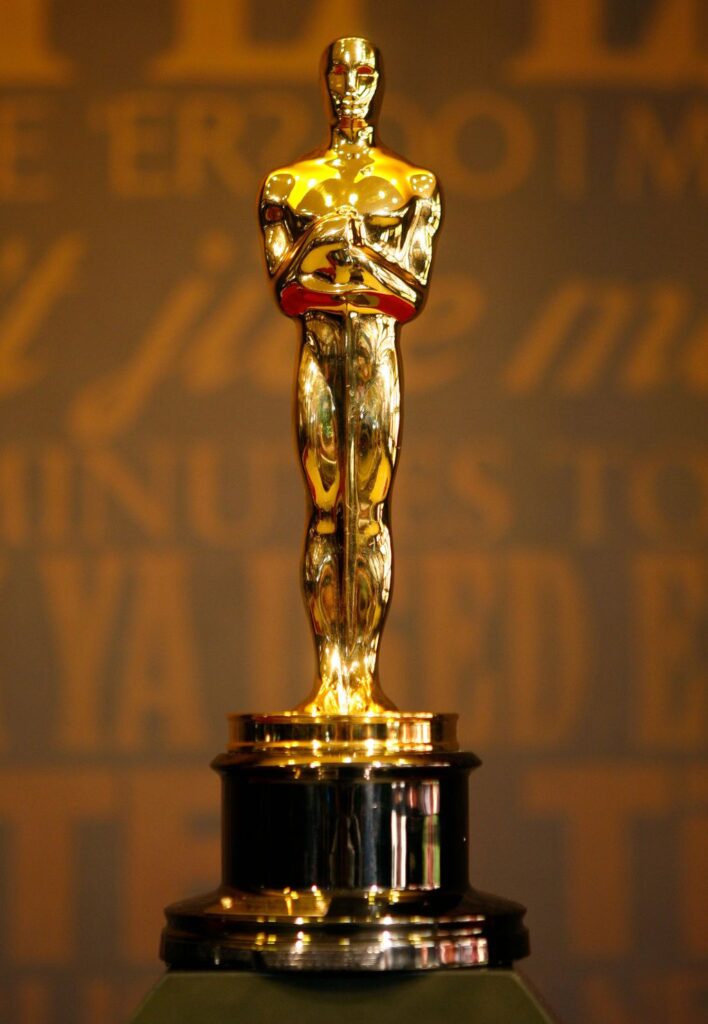
9. **Awards and Recognition: From Oscar Nods to Razzie Wins**’Annie’ garnered a range of acknowledgments, from prestigious industry nominations to less flattering anti-awards, reflecting the polarized reception it received. On the higher end of the spectrum, the film was nominated for two Academy Awards in 1983. These nominations were for Best Art Direction, recognizing the work of Art Director Dale Hennesy and Set Decoration by Marvin March, and for Best Song Score and its Adaptation, acknowledging Ralph Burns’s contribution.
The film also received recognition from other esteemed bodies. It was nominated for a British Academy Film Award for Best Original Song Written for a Film, specifically for “Tomorrow,” with music by Charles Strouse and lyrics by Martin Charnin. The Golden Globe Awards, too, acknowledged the film, with nominations for Best Actress in a Motion Picture – Musical or Comedy for Carol Burnett, and for Aileen Quinn, who also received a nomination for New Star of the Year – Actress.
However, not all recognition was positive. ‘Annie’ found itself nominated for, and in some cases winning, several Golden Raspberry Awards, or Razzies, which honor cinematic underachievement. Aileen Quinn, despite her Golden Globe nomination, won the Razzie for Worst Supporting Actress and Worst New Star. The film also received Razzie nominations for Worst Picture (producer Ray Stark), Worst Director (John Huston), and Worst Screenplay (Carol Sobieski, based on the musical by Thomas Meehan and comic strip by Harold Gray).
Beyond the more widely known awards, the film was also nominated for the Stinkers Bad Movie Award for Worst Picture, further solidifying its presence in lists of critically panned films of the year. In a more positive light for its young cast, ‘Annie’ was nominated for Best Motion Picture – Animated, Music or Fantasy at the Young Artist Awards. Aileen Quinn notably won the Young Artist Award for Best Young Motion Picture Actress, and Toni Ann Gisondi received a nomination for Best Young Supporting Actress in a Motion Picture, providing a counterpoint to the negative Razzie recognition.
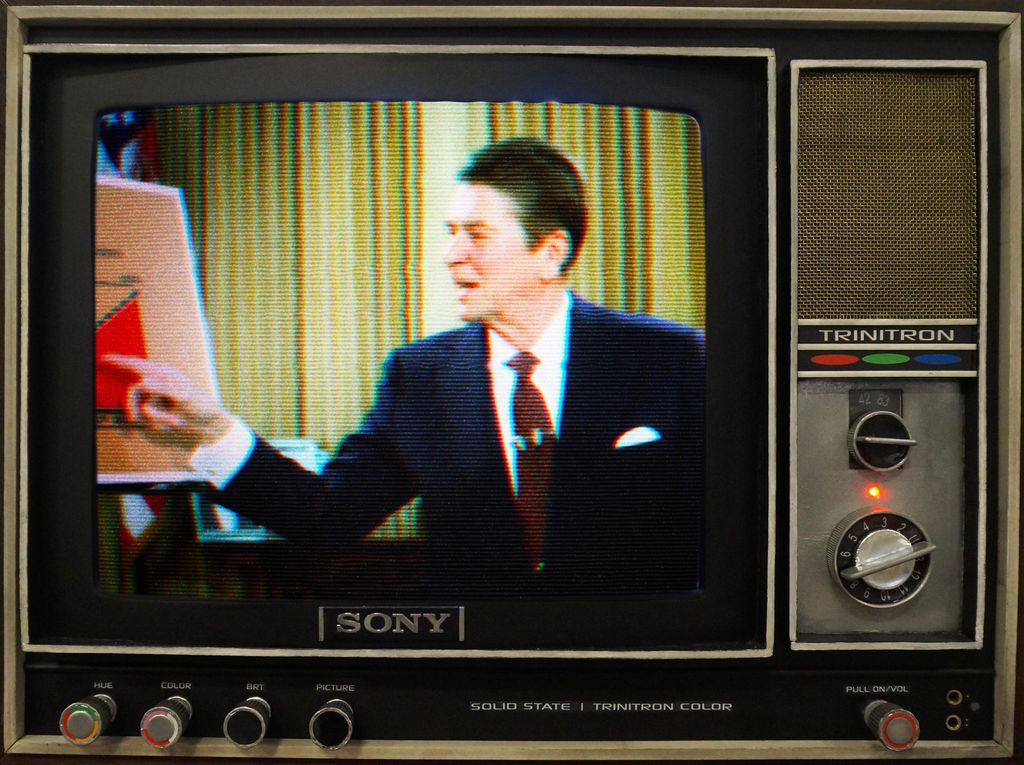
10. **Evolution Through Home Media: Bringing Annie to Every Screen**The enduring appeal of ‘Annie’ ensured its widespread availability across various home media formats, allowing audiences to revisit the film long after its theatrical run. The film first entered the home entertainment market on November 5, 1982, with releases on VHS, Betamax, and CED Videodisc by RCA/Columbia Pictures Home Video. This initial rollout marked the beginning of its journey into living rooms across the nation, making it accessible to a broader family audience.
Its popularity led to numerous re-issues throughout the 1980s and 1990s, with subsequent VHS releases in 1983, 1984, 1985, 1994, and 1997. The 1997 re-issue, notably, was branded as a “Broadway Tribute Edition,” coinciding with the 20th anniversary revival of the original stage play on Broadway, tapping into the musical’s sustained cultural relevance. For cinephiles and early adopters of advanced formats, two widescreen LaserDiscs were released, one in 1989 and another in 1994, offering enhanced visual quality for the time.
The advent of DVD technology brought ‘Annie’ into the digital age with a widescreen DVD edition released on December 12, 2000. Following this, a “Special Anniversary Edition” DVD arrived on January 13, 2004, just days before producer Ray Stark’s passing. However, this particular release faced criticism for its visual presentation; despite the earlier DVD being widescreen, the anniversary edition was released in pan and scan, though it did feature DTS sound. Glenn Erickson of DVD Talk notably critiqued the pan and scan transfer as an “abomination that’s grainy and lacking in color,” observing the irony that a retrospective featurette on the disc included clips from the film in the correct aspect ratio. Nonetheless, some international markets in Region 2 did receive widescreen versions of this edition, indicating varied distribution practices.
As technology advanced further, ‘Annie’ continued to embrace new formats. A “sing-along edition” was released on Blu-ray on October 2, 2012, celebrating both the film’s 30th anniversary and the Broadway version’s 35th anniversary, coinciding with a stage revival in November 2012. Most recently, the film received a 4K Blu-ray release on October 25, 2022, as part of “Columbia Classics Collection: Volume 3.” This release included the full 1932 film *Little Orphan Annie* and new special features for the newly-remastered Blu-ray, offering the most comprehensive and high-definition viewing experience to date.
Beyond packaged media, ‘Annie’ also made its national television debut on February 24, 1986, as part of the NBC Monday Night Movie. To fit within the two-hour time slot with commercials and broadcast restrictions, the film was shown in a pan-and-scan format and had its running time significantly cut from 128 minutes to a condensed 96 minutes, making it accessible to a vast television audience, albeit in an abridged form.

11. **The Legacy Continues: Television Sequels and New Interpretations**The story of Annie, far from being confined to its 1982 film adaptation, has continued to resonate and inspire new creations across various media, extending its legacy through comic books, international adaptations, and television productions. Marvel Comics, capitalizing on the film’s popularity, published a comic book adaptation in *Marvel Super Special #23* in the summer of 1982. This adaptation, crafted by writer Tom DeFalco and artists Win Mortimer and Vince Colletta, was also made available as an *Annie Treasury Edition* and a limited series, bringing the film’s narrative to a new visual medium.
The universal themes of hope and resilience in ‘Annie’ also found resonance in international cinema, inspiring filmmakers in India. The 1983 Malayalam movie *Ente Mamattukkuttiyammakku* was reported to be inspired by the film, translating its heartwarming narrative to a different cultural context. A decade later, the 1993 Hindi film *King Uncle*, starring Jackie Shroff, Shahrukh Khan, Anu Agarwal, and Naghma, was also loosely based on the 1982 ‘Annie,’ showcasing the story’s adaptability across diverse cinematic landscapes and languages.
The direct narrative of the 1982 film saw a made-for-television sequel titled *Annie: A Royal Adventure!*, which aired on ABC on November 18, 1995. This sequel, distinct from the original, starred Ashley Johnson as Annie, alongside Joan Collins, George Hearn, and Ian McDiarmid. Notably, no cast members from the 1982 film returned for this production, and it largely eschewed musical numbers, featuring only a reprise of “Tomorrow.” The plot saw Warbucks and Annie traveling to England, entangled in a scheme to blow up Buckingham Palace, marking a significant departure from the original’s tone and character focus, as key characters like Rooster, Lily, and Grace Farrell were omitted.
Another significant television adaptation arrived on November 7, 1999, with a made-for-TV movie broadcast on ABC. Produced by The Walt Disney Company in association with Columbia TriStar Television, this version starred a notable cast including Kathy Bates as Miss Hannigan, Victor Garber as Daddy Warbucks, Alan Cumming as Rooster, Audra McDonald as Grace, Kristin Chenoweth as Lily, and newcomer Alicia Morton as Annie. This 1999 rendition received “generally positive reviews and high ratings,” earning two Emmy Awards and a 1999 George Foster Peabody Award. It distinguished itself by being “truer to the original stage musical than the 1982 version” and adopted a “more comedic tone” compared to the earlier film’s slightly darker approach, while still condensing much of the story to appeal to child viewers. A special highlight was an appearance by Andrea McArdle, the star of the original Broadway production, connecting the adaptation to its theatrical roots. This version has since been frequently aired on cable channels like Hallmark Channel, ABC Family, and Starz, maintaining its visibility for new audiences.
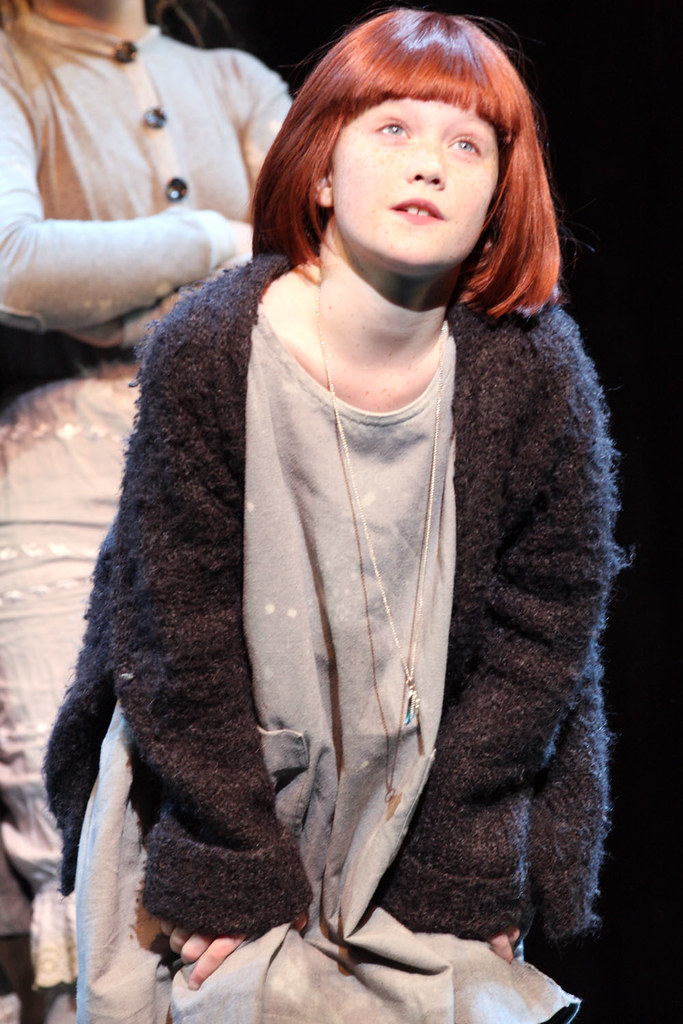
12. **Modern Remakes: Reimagining Annie for New Generations**The enduring resonance of the ‘Annie’ narrative has led to further significant remakes, seeking to introduce the beloved story to contemporary audiences with fresh perspectives and updated sensibilities. On January 20, 2011, Will Smith announced plans to produce a contemporary remake of the 1982 film, signaling a renewed interest in bringing Annie’s optimistic spirit to the silver screen for a new generation. The project gained further momentum with Jay-Z’s attachment on May 25, 2012, who contributed by writing new songs for the film, aiming to blend the classic story with modern musical influences.
Sony Pictures moved forward with the project, selecting Will Gluck to direct the film in January 2013. The casting process culminated in February 2013 with Oscar nominee Quvenzhané Wallis being chosen as the titular character, bringing a fresh face and a modern interpretation to the iconic orphan. Released on December 19, 2014, this latest film adaptation, despite facing “poor reviews by critics,” proved to be a “commercial success,” earning $133 million on a $65 million budget. This financial success underscored the timeless appeal of ‘Annie,’ even when presented through a contemporary lens that diverged significantly from its predecessors.
Continuing the tradition of reinterpreting the musical for new audiences, a fourth adaptation took the form of a live television production of the musical, which was performed on December 2, 2021, on NBC. These modern efforts, from theatrical remakes with updated scores and diverse casting to live television events, underscore the lasting power of ‘Annie’s’ story. Each adaptation, while bringing its own unique vision and creative team, has played a crucial role in reintroducing the plucky orphan and her message of hope to new generations, ensuring that Annie’s journey for a better ‘Tomorrow’ remains an indelible part of popular culture.
The journey of the 1982 film ‘Annie,’ from its grand cinematic aspirations to its mixed critical reception and eventual enduring legacy through various adaptations, paints a vivid picture of the challenges and triumphs inherent in bringing a beloved stage phenomenon to the screen and beyond. Despite the initial creative disagreements and the film’s complex financial outcome, its impact on popular culture has been undeniable. It served as a pivotal point for a story that, originating in the depths of the Great Depression, continues to echo themes of hope, resilience, and the universal search for family across generations. From its initial VHS release to its modern 4K restoration, and through a parade of sequels and remakes, ‘Annie’ has consistently found new ways to capture hearts, proving that some stories, much like the spirit of a certain red-haired orphan, truly are timeless. The diverse interpretations across different media only solidify its status as a cultural touchstone, constantly reimagined but always true to its core message that the sun will, indeed, come out ‘Tomorrow.’

:max_bytes(150000):strip_icc()/travelinsurance-cb50a4e892344d29a58578e9d2178685.jpg)
